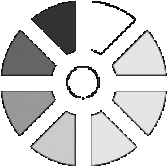An Overview of Education System in New Zealand
The New Zealand is an island country located on the south east of Australia in the South Pacific, is composed of the North Island, the South Island and a number of smaller islands. It is blessed with a varied and unique biodiversity and is considered as a biodiversity hotspot the world over.
The education system in New Zealand before the year 1877 was not a standard one. Schools were generally provincial government run or were run by churches or privately and very few children attended them. Children from rural areas where labour was more important rarely attended school and the quality of educators also varied. The passing of Education Act 1877 was a landmark in the country, as it looked to set the standard of education by making it free, secular and compulsory for children aged between 5 and 15 years. However, secondary education was still lagging behind, as the requirement was more for labour jobs than for educational qualification. It improved only in 1914 when the Education Act was passed to make secondary education compulsory for those who passed a Proficiency examination.
The education system, in spite both these moves, was not a rounded one because it failed to suit those with goals other than the traditional ones. The introduction of technical high schools in the early part of the 20th century was a step towards redressing this problem; however, this idea did not succeed. This led to the Thomas Report in 1944, which aimed to address the problems of curriculum as had been voiced earlier. This report introduced school certificate, replacing a matriculation with university entrance and brought in a common curriculum providing education for all.
More major reforms were introduced in the 1980s, when the government ordered a review of the curriculum.
Two major reports appeared- the Picot report and Tomorrow Schools, which had New Zealand replacing the Department of Education with a ministry and turning schools into autonomous entities managed by boards of trustees. This practice is still in place all over New Zealand. Reforms that updated what were to be taught at schools were finally completed in the 1990s.
Major Changes in the Education System
All facets of education in New Zealand have undergone transformation in the last two decades, including the areas of curriculum, qualification, assessment, governance, and teaching and learning. Consequently, arrays of innovative ideas and methods have been successfully adopted, rooted in research and evidence.
Education in New Zealand is now focused on the life-long education needs of the students. Each student is able to develop his/her potential along several possible trails, academic or vocational. Teachers use a large variety of learning materials, and medium to encourage critical thinking. This focus on research-evidenced practice is one of the aspects contributing to elevating student success in New Zealand.
Compulsory Education
Education is compulsory for all children between the ages of 6 and 16, though most children start their education from the age of 5. As of July 2013, the total number of state and private schools in New Zealand was 2,539, which included composite schools, special schools and the Correspondence School.
Education Structure
The education system of New Zealand comprises of three levels – early childhood education, school education and tertiary education. School education (primary and secondary) is compulsory between the age group of six and sixteen (Year 1 to Year 9 or 10) and is free in the state system.
Early Childhood Education: Is for children who are below the age of 5 years. New Zealand follows a curriculum that is world leading, which sees a high student turnover and very high quality of teachers.
School Education: Is meant for children aged between 5 and 19 years and can be divided into primary and secondary education. There are 13 Year levels for this system, where education is compulsory for children aged 6 to 16 years that corresponds to Year 11 for most students; however, most students continue till Years 12 and 13.
Primary Education: Is meant for students aged 5 to 12 years that corresponds to Year 1 to Year 8.
Secondary Education: Is meant for students aged 13 to 17 years that corresponds to Years 9 to 13.
Tertiary Education: This third level of education is inclusive of all post-secondary education including all higher, technical and vocational education.
University Education
The universities in the country are globally well-known, with one in the best 50 universities and more than 50 percent among the best 500 universities globally. All of these universities have a broad range of subjects in the science, humanities and commerce streams offering undergraduate, postgraduate and Doctoral (PhD) degrees.
Technical and Vocational Education and Training (TVET): There are about 20 state-owned Institutes of Technology and Polytechnics (ITPs) and various Private Training Establishments (PTEs) and 3 wananga that offer vocational education and about 40 Industry Training Organisations (ITOS) that offer technical education in New Zealand.
International Students
New Zealand figures as a popular education destination for students all over the world because it provides the safe environment for living and excellent learning opportunities. Every year thousands of new International students apply for university programs in New Zealand.
 Processing...
Processing...
 Processing...
Processing...